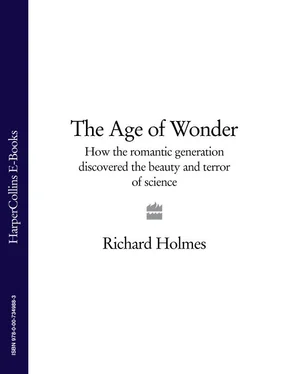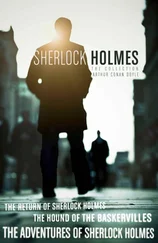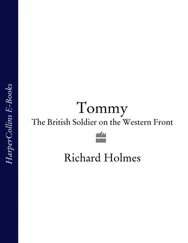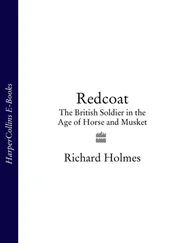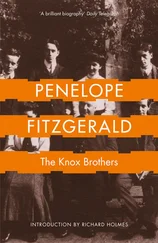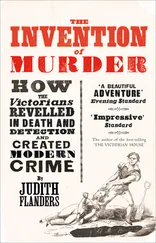From the start, Herschel’s observations have a note of authority, and he is ready to challenge current astronomical thinking. His Observation Journal for 4 March 1774 reads: ‘Saw the lucid spot on Orion’s Sword, thro’ a 5 ½ foot reflector; its shape was not as Dr Smith has delineated in his Optics ; tho’ something resembling it…From this we may infer that there are undoubtedly changes among the fixt stars, and perhaps from a careful observation of this spot something might be concluded concerning the Nature of it.’ 88 Even at this early stage Herschel has the notion of a changing universe, and that nebulae might hold some clue to this mystery. Each winter between 1774 and 1780 he made detailed drawings of Andromeda and the Orion nebula to see if any alterations could be identified. 89 ♣
The nebulae represented a new field of sidereal or stellar astronomy. Only thirty nebulae were known in the 1740s, at the time of Herschel’s birth. By the time Herschel began to study them in the mid-1770s, Charles Messier in Paris had catalogued just under a hundred. Within a decade, by the mid-1780s, Herschel would have increased this tenfold, to over a thousand nebulae. 90 No one really knew their composition, origins or distance. In general they were thought to be a few loose clouds of gas, hanging static in the Milky Way, some loose flotsam of God’s creation, and of little cosmological significance. Herschel suspected that they were star clusters at immense distances, whose composition might hold a clue to an entirely new kind of universe.
Sometimes, to observe the northern sky, he took his telescope out into the street at the front of the house, and dictated notes to Caroline. That autumn they attended together a return series of Ferguson’s astronomy lectures, given at the Pump Room by popular demand. Herschel’s journal records that he was still giving eight one-hour music lessons a day, and Caroline was continuing several hours’ singing practice. 91 But the music scholars were sometimes surprised by Herschel ‘dropping his violin’ in the middle of the last evening lesson, and jumping up to peer at some particular group of stars from the window. One startled student recalled: ‘His lodgings [at Rivers Street] resembled an astronomer’s much more than a musician’s, being heaped up with globes, maps, telescopes, reflectors etc, under which his piano was hid, and the violoncello, like a discarded favourite, skulked away in a corner.’ Herschel himself said that some of his pupils ‘made me give astronomical instead of music lessons’. 92
Back in Hanover, Anna and Jacob were still expressing doubts about Caroline living in England. Again, Herschel did not mention astronomy, but revealed that he had established a small millinery business on the ground floor at 5 Rivers Street, to supplement the household income, which Caroline was running successfully as well as pursuing her singing. 93 He then slipped over to reassure them in the summer of 1777, and for the first time wrote a series of confidential letters to Caroline in English. ‘Mama is extremely well and as I have represented things gives her consent to you staying in England as long as you and I please. I wish very much to see my own home again [Bath], and conclude at present, remaining your affectionate Brother, Wm. Herschel…I hope to be in Bath about 14-16 of Sept.’ 94
Caroline was continuing her singing training, and beginning to perform regularly in Herschel’s concerts at the Pump Room. But she ‘could not help feeling some uneasiness’, as she put it, about her future prospects, as more and more of William’s time was ‘filled up with Optical and Mechanical works’. 95 Once they went together to fulfil a singing engagement in Oxford, but Caroline remembered it largely for the perilous journey home, ‘for the jaunt was made in a single horse Chaise, and my Brother was not famous for being a good driver’. 96
Then William gave her ten guineas-a very considerable sum-to spend on whatever evening dress she liked, for her musical performances. She was overjoyed when the proprietor of the Bath Theatre, Mr Palmer, solemnly pronounced her to be ‘an Ornament to the Stage’, a compliment she never forgot. 97 On 15 April 1778 she was advertised, for the first time, as the principal solo singer in a programme of selections from Handel’s Messiah at the Bath New Rooms. As this was Herschel’s own end-of-season ‘Benefit Concert’, it was clearly he who promoted her. Her performance was such a success that she was offered her first solo professional engagement by a company at the Birmingham Festival for the following spring. Here at last was her chance of an independent career, at the age of twenty-eight. But after consultation with William, she turned it down, announcing that she was ‘resolved only to sing in public where her brother was conducting’. Consciously or not, she had made a decision about her future with William. 98
It may be no coincidence that the following year, 1779, Herschel began a much more serious and regular pattern of observations. He recorded: ‘January. I gave up so much of my time to astronomical preparations that I reduced the number of my [music] scholars so as not to attend more than 3 or 4 a day.’ 99 He had decided on his first major astronomical project: to establish a new catalogue of so-called ‘double stars’.
John Flamsteed had observed over a hundred double stars, but had established no special record of them, and there were obviously many more to be found. The value of double stars was that they might provide a method of gauging the earth’s distance from the rest of the Milky Way, by the measuring of parallax. ♣
Although distances within the immediate solar system-to the moon and notably to the sun (using the Transit of Venus observations)-had been approximately measured, there was no general idea how far away the stars were, or what the size of the Milky Way might be. Kant, for example, assumed that Sirius (the Dog Star), because of its brightness, was probably the centre of the entire Milky Way galaxy, and possibly of the whole universe. 100 In fact it is one of our nearest stars, just over 8.7 light years away.
Most current ideas about the cosmos were small-scale. It was widely believed that the earth was a few thousand years old at most (Biblical calculations gave 6,000 years), and that the universe might stretch out a few million miles ‘above’ the earth. The ‘fixed stars’ revolved in an unchanging pattern, and their brightness or magnitude was probably a function of their size, rather than their distance. So a faint star was probably comparatively small, rather than comparatively far away-a perfectly reasonable assumption. (One of Herschel’s most simple and radical ideas was to assume exactly the opposite.) The physical closeness of the stars and planets also explained their astrological ‘influences’. The universe was small, closely connected, largely unchanging (except for comets), and almost intimate.
Nevertheless, the eighteenth century had been rich in speculative theories about the possibility of a ‘Big Universe’. These included Thomas Wright’s Original Theory or New Hypothesis of the Universe (1750) and Kant’s Universal Natural History of the Heavens (1755), which first proposed-though without observational evidence-that there might be ‘island universes’ outside the Milky Way, that some distant stellar systems might be altering, and that the whole cosmos might be in some sense ‘infinite’, though it was not clear what exactly ‘infinite’ might mean, as hitherto it was a quality possessed only by God and mathematics. Herschel himself had added to these theoretical accounts with an early paper, eventually published by the Bath Philosophical Society, ‘On the Utility of Speculative Enquiries’.
Читать дальше
